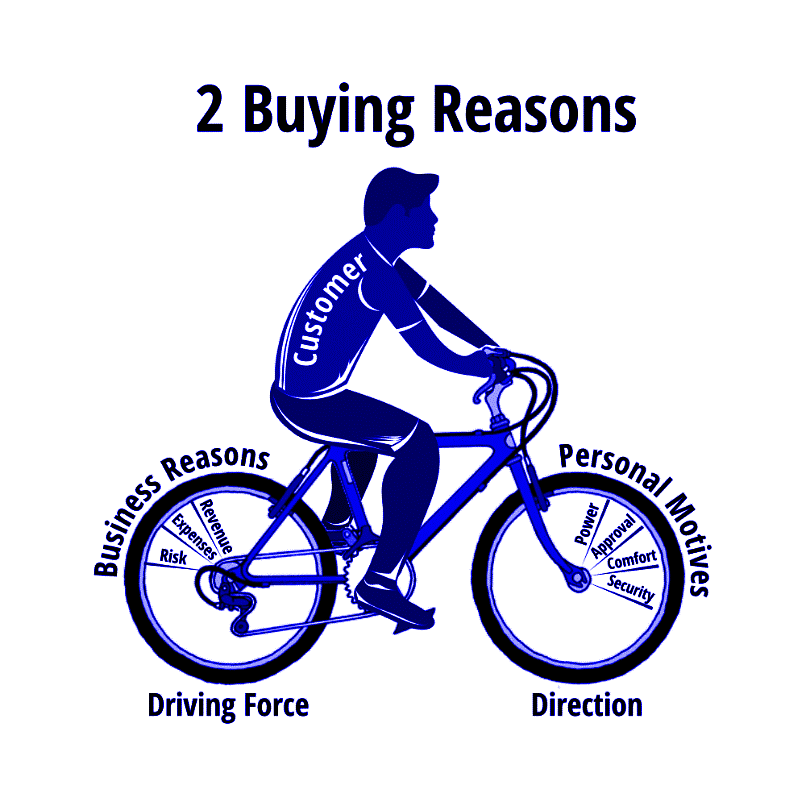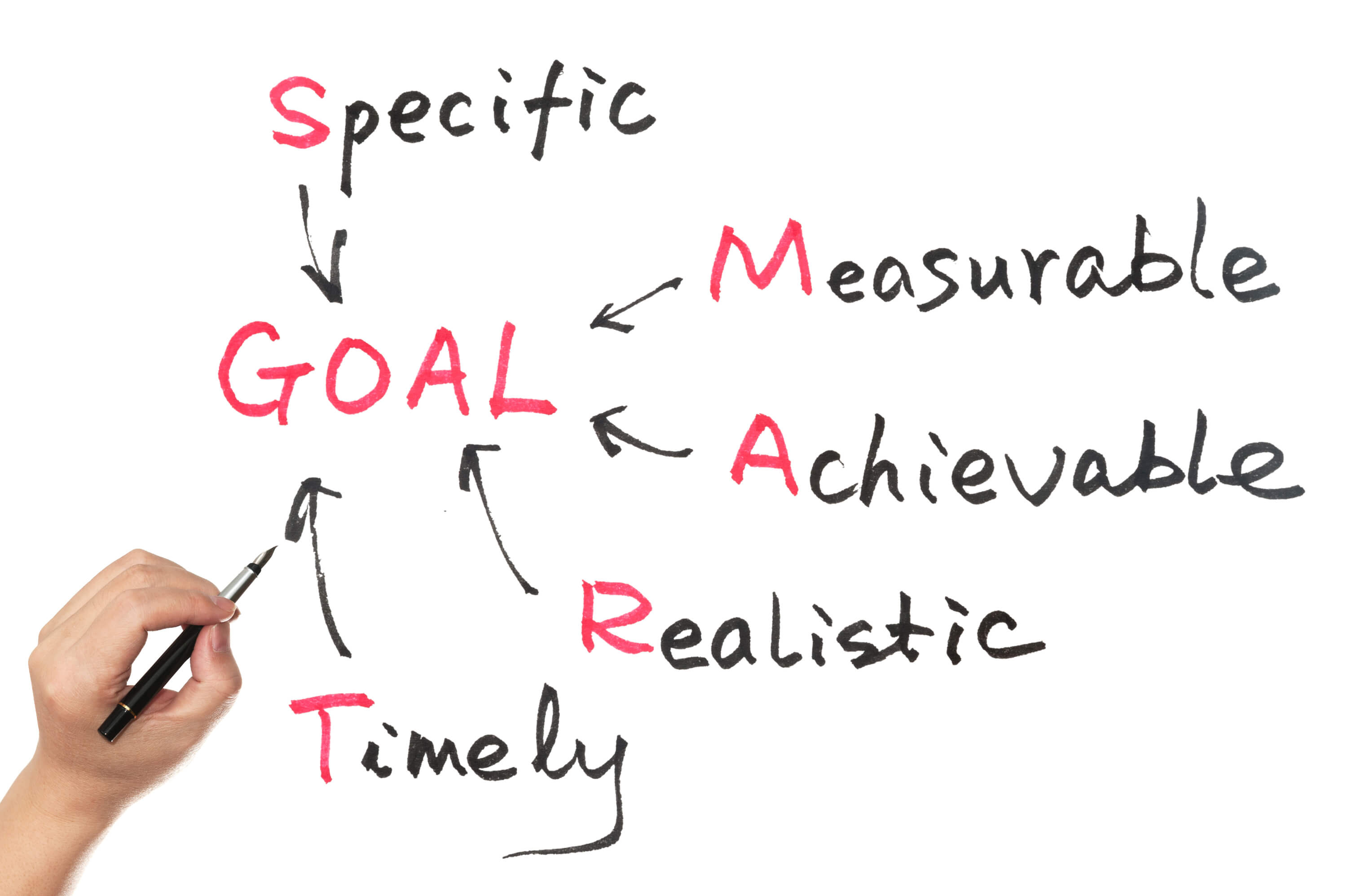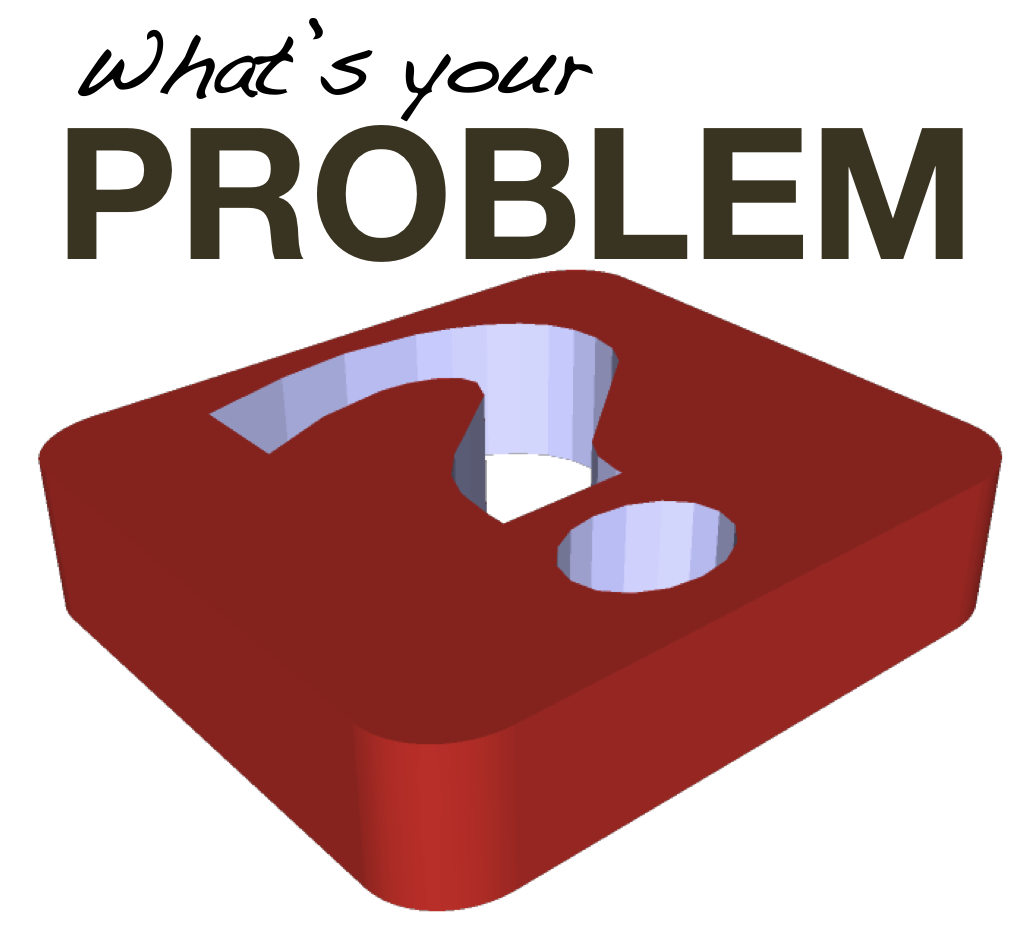The Internet. That – in one word – is why cold calling is dead, even for B2B sales.
If the rear wheel of your customer’s bike is the driving force, or the business reasons, behind why your customer buys (as we discussed in Part 1), then the front wheel is the one that determines the direction in which he will go – whether he buys from you or from someone else. Here, personal motives are the deciding factor.
Topics: sales process, Sales, sales strategy
There are two forces that drive a customer’s buying decision: business reasons and personal motives. A successful sale depends on your ability to accurately identify the reason your customer has for buying and what he’s looking for in a vendor. If you fall short in either area, you are likely to lose the sale.
Topics: sales process, Sales, sales strategy
Do you sales reps have written goals? Do your employees have written goals?
Goal setting is one of the most powerful tools and methodologies to improve engagement - engagement of sales people and engagement of employees. Billy Cox writes in the All Star Sales Book: Get in the Game, Boost Your Number and Earn the Big Bucks “Why do such a small percentage of people reach the elite performer status? Why do these top few make most of the money? And, how can you become one of them? Winning in sales is no different than winning in sports, business, and life. The next generation of salespeople may know how to close a sale, but most don't know how to effectively develop their mental aspects of the game. As a result they never make it to the top and they sit around wondering why others with less talent keep passing them by. In the game of sales, business, and life there are no time-outs, no overtimes. You only get one chance to play. The question you have to ask yourself is, ‘Do I want to wait on the sidelines or do I want to win?'"
Topics: sales process, sales training, goals, engagement
Selling to Core Issues - Controlling or Reducing Expenses
In sales, you must understand what the core drivers are for a business owner when he or she is making a business decision, especially about buying your product or service. In the business owner's mind, they are relating everything they evaluate to three key core business drivers: revenue, expenses and risk. They are asking these fundamental questions when looking at an offering:
1) Does this offering protect or increase my revenue? 2) Does this offering control or reduce my expenses? and 3) Does this offering reduce or control my risk?
As a sales rep, understanding those core issues and tying your offering into how they impact those areas, will greatly set you apart from other sales reps who are just selling features and benefits and making promises. The way to tie your offering into those areas is to ask lots of questions such as "Mr. Business owner, how do you see our offering impacting your revenue stream?" or "Others have seen a 10% reduction in expenses by implementing these new processes; do you see yourself getting a similar benefit? " "One of the key focuses of our software is to reduce the chance of a customer falling through the cracks and you losing the business or having a liability charge for negligence in serving your customer. Share with me how you see our offering impacting your business in this way."
Last week I focused on revenue. This blog will expound upon controlling or reducing expenses as the major buying criteria.
Topics: sales process, sales training, Sales
Selling is a beauty contest, not a race. Unfortunately, the majority sales reps and sales leaders focus on their goals, their quota and making the numbers in the forecasted time frame, thus creating the sense of a race. This race approach is very seller centric, not customer centric. According to a recent Salesforce.com study, 82% of sellers are out of sync with their customers.
Topics: sales process
Is your selling strategy based upon building solid relationships through the sales rep's likeability factor? If so, you are getting a declining return on the sales rep's ability to get new business or even maintain existing customers. Most sales reps are very high in the red or relationship quadrant. (Whole Brain Thinking) (Herrmann) They have good people skills and can win others over (WOO ability) quickly. The strategy behind WOOing is that they are trying to build trust. The assumption is that if someone likes me, they will trust me.
The likeability sales strategy or relationship selling tactic is breathing it's last breath. In today's business environment, the majority of decision makers don't have time to discover if they like you before they know what value you offer. Today's decision maker does not have the time for building interpersonal relationships (red quadrant) unless there is an obvious value to be gained. The traditional relationship selling model of being liked first assumes the likeability factor will then lead to the opportunity to show value.
Topics: sales process, sales training, whole brain thinking, Sales
Sales Productivity- Lessons Learned from the Least Busy
Busyness does not necessarily equate to productivity.
John Lee, writes in his blog Lessons Learned from the Least Busiest People that real productivity comes from a free mind, not a busy mind. I love his example of the surgeon running from one meeting to another while also trying to stay focused to operate on a person, all the while being distracted by social media.
Topics: sales process
20 Causes of Sales Problems
Below are 20 problems that cause VP of Sales and business owners great distress. These mostly sales process issues that result in poor sales. If you are having less than stellar sales results, see if one or more of these reasons are the culprit.
Topics: sales process, sales training, Sales
No Questions - No Sale - Improving the closing ratio
-
Jill Konrath makes a great point in her latest blog about sabotaging the sale by not asking enough questions. sabotaging the sale
A good sales rep relates the product or service features to true business situations. If you are quick to answer the customer’s problem before understanding how the problem impacts their business, you are sabotaging your own sale. Don’t tell what your service or product can do, let them discover through asking relevant questions digging into the deeper issues. Question asking is the key to a Customer Aligned Selling approach and is integral to an effective sales process.
Topics: sales process, Sales, effective questions









